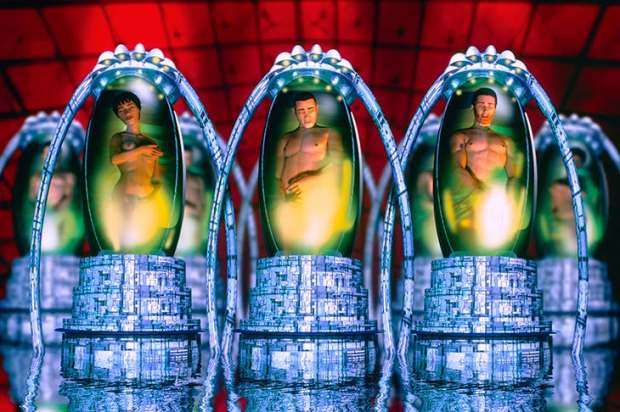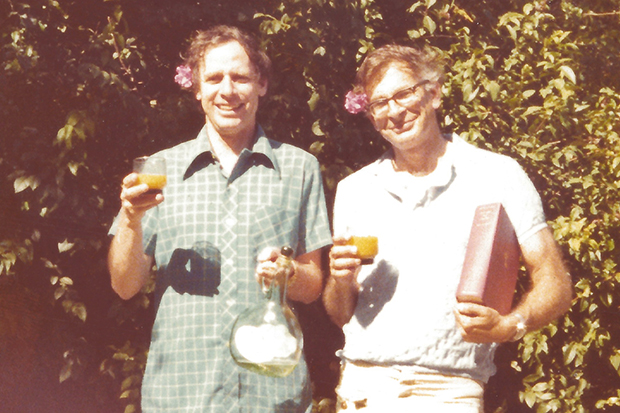Nothing will come of nothing, said Lear, because he wasn’t familiar with quantum physics. According to our current best theories, a region of space that contains nothing at all is still seething with pairs of virtual particles popping in and out of existence for no good reason. Meanwhile, it is possible to be mathematically sure that an entire universe contains nothing whatsoever, but then if you go looking for stuff in a particular part of this same universe you could find a wheelbarrow.
But what did I mean by ‘a region of space’? It turns out that all sorts of assumptions are baked into such a phrase depending on what cosmology I have — and similarly with the ideas of ‘stuff’ and its alleged opposite, ‘nothing’. What this entertainingly mind-expanding primer on physics accomplishes brilliantly is to demonstrate how much confusion, but also how much fruitful progress, arises from the tension between our folk concepts of what counts as ‘nothing’ (and, concomitantly, what counts as ‘stuff’), and the way such concepts are retooled and stretched almost beyond comprehension for scientific purposes.
The story is told through refreshingly nuanced accounts of three revolutions in physics. First, Isaac Newton’s account of gravity painted a picture of space as basically an empty container in which bodies could move. This void was ‘absolute’, Newton thought: effectively describable by a vast system of objective Cartesian co-ordinates given by God. Newton’s great rival Leibniz disagreed: he thought that the relative space between actual objects (planets and the like) was all we could reasonably talk about. (Leibniz turned out to be right.)
The second revolution arrives with Albert Einstein’s theory of relativity, bolstered by Hermann Minkowski’s mathematics of spacetime. Among its surprising results is that the geometrical structure of ‘empty’ spacetime itself depends on the stuff that is zooming around in it. (Mass bends spacetime, and the bendiness results in what we loosely call the ‘force’ of gravity.) More peculiarly, it turns out that a universe obeying Einsteinian equations can be totally empty of anything we would normally call ‘stuff’ (particles, matter in general), but it can still contain a black hole, or gravity waves (which are ripples in the geometry of ‘empty’ spacetime itself). So that’s not nothing either.
It turns out to be very difficult to get rid of everything, as aspirant declutterers know all too well.
The third revolution, quantum physics, hardly helped. Now what we loosely call ‘particles’ are widely understood in physics to be particular excitations of ‘fields’, like the electromagnetic field, that pervade the entire universe. (This, Weatherall notes, is very like the unfairly mocked old idea of the ‘ether’, a kind of omnipresent fluid medium through which light waves could propagate.) Mathematically, there are particular states of affairs, called ‘vacuum states’, in which ‘it is absolutely certain that there are no particles in the whole universe’. Could this be the perfect nothing we have been searching for? Unfortunately, no. ‘The whole world as we know it,’ Weatherall explains shockingly, ‘is consistent with the universe being in a vacuum state.’ This kind of nothing, it turns out, is not the absence of matter; it’s just one particular way in which matter can hang out.
So our best theories of nothing are not like the screen of a blank, switched-off TV set; they are like the static of an old-style analogue TV tuned to no channel. The author is always courteous enough to help the reader with such local colour. At other times he invites us to picture a bucket of water rotating in an otherwise empty universe, and celebrates the charming indifference to social niceties displayed by great geniuses. One time a journalist asked the British physicist Paul Dirac whether he could explain his research in layman’s terms. Dirac’s answer? ‘No.’ Chapeau!
In an action-packed epilogue, the author describes how the contested field of string theory posits a bogglingly large number of possible kinds of nothingness, and impresses upon the reader how much of physics still depends on intuition and battling ‘interpretations’. The book is not an exhaustive typology of scientific nothings: not directly addressed, for example, is the nothingness that supposedly obtained before the Big Bang. But to regret this is just to emphasise the success of this stylishly written and admirably concise book, at the end of which you will be inclined to agree, along with the author and Freddie Mercury both, that ‘Nothing really matters.’
Got something to add? Join the discussion and comment below.
Get 10 issues for just $10
Subscribe to The Spectator Australia today for the next 10 magazine issues, plus full online access, for just $10.














Comments
Don't miss out
Join the conversation with other Spectator Australia readers. Subscribe to leave a comment.
SUBSCRIBEAlready a subscriber? Log in